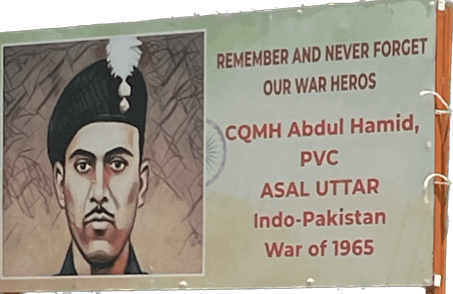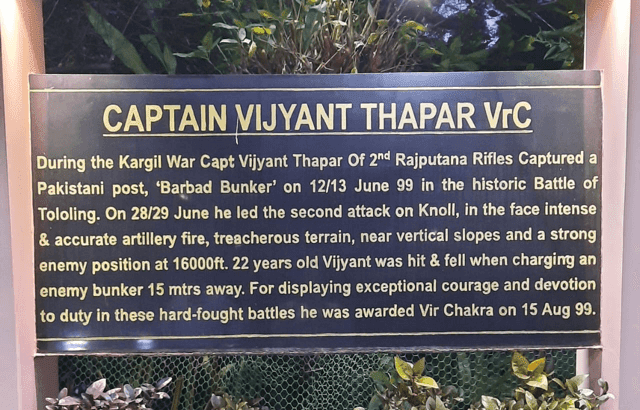Reading Time: 4 minutes
In the early 1980s, NOIDA was a visionary hub for urbanisation, balancing land ownership dreams with speculator ambitions. Today, Arun Vihar is a living testament to India’s armed forces and a modern-day pilgrimage site, states Dr Roopali, exclusively for Different Truths.
Transport yourself back to the early 1980s, a time when NOIDA (New Okhla Industrial Development Authority) emerged as a vision of progress and urbanisation. It began as a settlement colony for non-polluting industries and government staff residences.
As the blueprint of NOIDA unfurled, it extended its reach, encompassing numerous villages and sprawling agricultural lands. Each acre promising open space amidst the burgeoning urban landscape.
Land speculators wasted no time. They emerged quickly, donning the pompous title of “colonisers.”

Land speculators wasted no time. They emerged quickly, donning the pompous title of “colonisers.” They set up bamboo and canvas tents amidst the vast, uncharted fields. Hopeful buyers, drawn from Delhi and its neighbouring towns flocked to the scene, eyes brimming with dreams of land ownership.
The colonisers spun tales of impending land demarcation, luring these eager souls into parting with ₹5,000 to ₹10,000 as booking fees, a price willingly paid in pursuit of their aspirations. Soon, the tents lay scattered, chairs upturned, and promises abandoned. Farmers watched their overnight riches turn into nightmares.
Maharishi Mahesh Yogi established an ashram, but it fizzled into controversy, and everyone vanished. Schools and hospitals sprouted. Temples, too. The land was subsidised for these ventures, originally promised to benefit farmers. When it didn’t, and instead, buses filled with children and patients who arrived from Delhi, villagers protested. Order was restored, and Corporate Social Responsibility (CSR) became mandatory.
The Indian Armed Forces acquired land here to kick-start the Army Welfare Housing Organization (AWHO)
The Indian Armed Forces acquired land here to kick-start the Army Welfare Housing Organisation (AWHO). They named the neighbourhood Arun Vihar after Second Lieutenant Arun Khetarpal, PVC, a highly decorated martyred war hero of the India-Pakistan War in 1971.
The Indian Navy and Air Force housing associations followed with their own “Jal Vayu Vihar” as a nod to their modes of water and air.
Slowly, defence force families moved into their affordable homes. Infrastructure was rudimentary, and New Delhi felt far away. Yet, the pride of homeownership shone through. We were one of those families. We loved our home, even though electrical and woodwork fixtures were not yet installed.


A strong sense of belonging and camaraderie bound veterans and serving officers together.
A strong sense of belonging and camaraderie bound veterans and serving officers together. They enjoyed the amenities of a defence services club, a community centre, an army school, and a golf course, all of which fostered a close-knit community. Fauji military brats played here, and their resilience defined them. Many joined the military, becoming celebrated heroes.
Fast forward a few decades, and NOIDA is no longer remote. It is now well-connected, bustling with shopping malls and open-air bazaars, movie studios, manicured parks, and war memorials.
Shaheed Smarak Park, a tribute to martyred soldiers, stands amid the chaos. Fighter aircraft flank the entrance.
Captain Vijayant Thapar’s story is a living symbol of heroism. His return in a tri-coloured casket was a catalyst for the transformation of Gulmohar Enclave, where we lived, into Vijayant Enclave.
Throughout this area, a combination of Sectors 29, 37, 28 and 25’s hoardings pay homage to heroes, a constant reminder of the profound contributions of India’s armed forces. Names like Abdul Hamid, Albert Ekka, Vikram Batra, Col Hoshiar Singh, Col Ardeshir Tarapore, and Field Marshal Gen Sam FJ Manekshaw adorn roads and petrol pumps, keeping their legacies alive.


In Arun Vihar, patriotism flows in the veins of its residents.
In Arun Vihar, patriotism flows in the veins of its residents. Independence Day celebrations here are poignant, filled with candlelit marches, flag hoisting, kite flying, poetry, and songs.
These residents, living witnesses to history, carry deep emotions. They’ve seen it all—the sacrifices and losses, and their message resounds with a call for peace.
Arun Vihar in Noida has become a pilgrimage site, akin to the distant war memorial in Kohima, Nagaland, reminding us, “When you go home tell them of us, for their tomorrow we gave our today.”
Picture design by Anumita Roy and photos sourced by the author.















